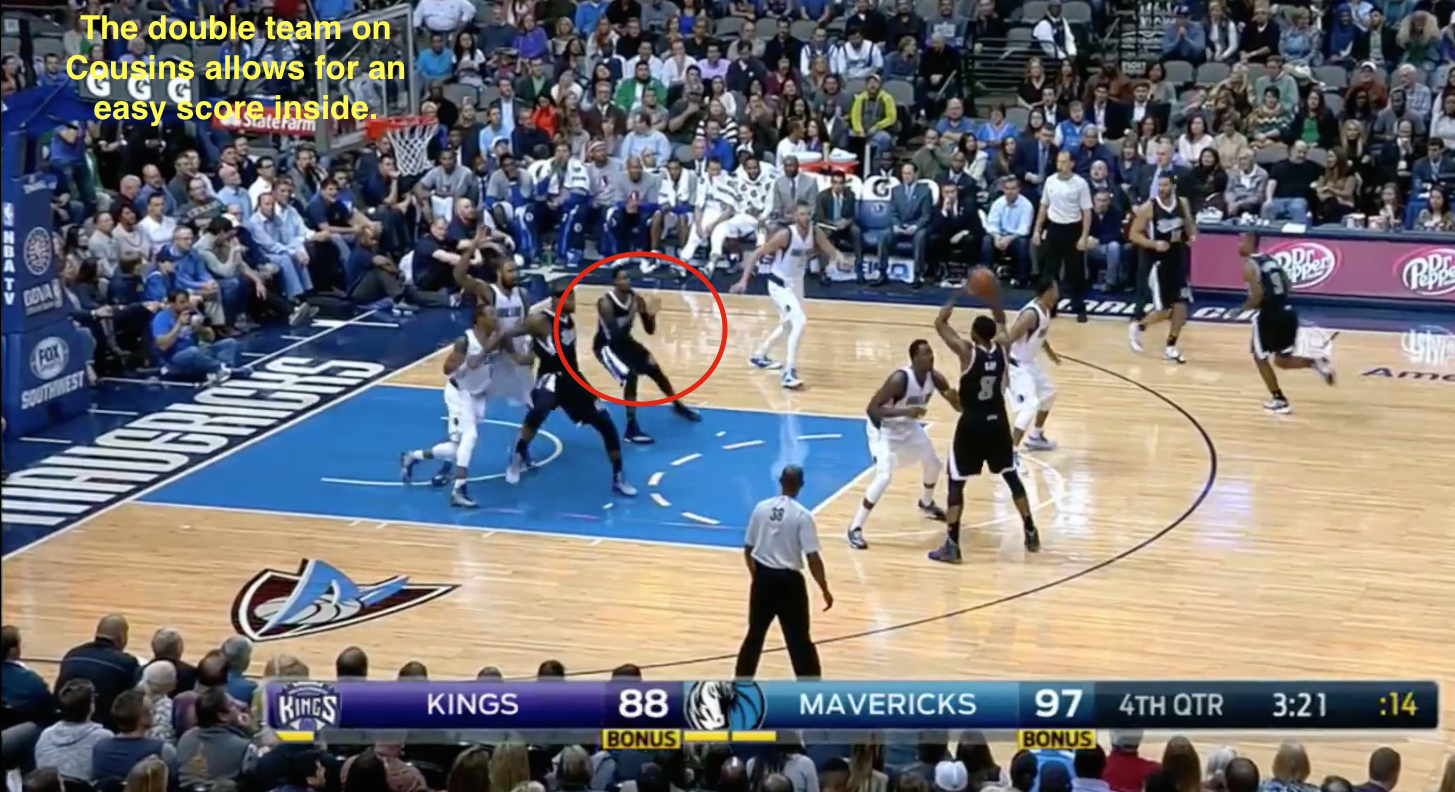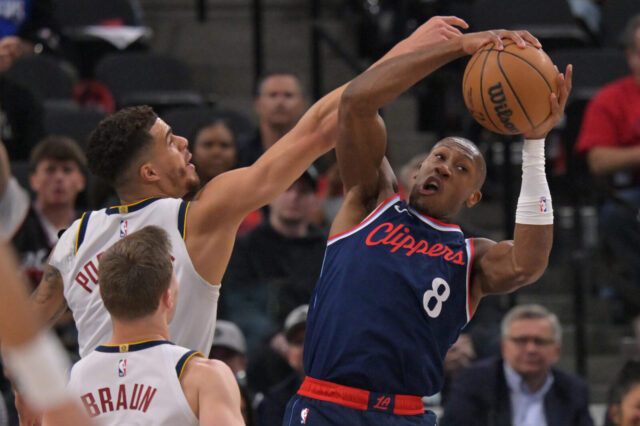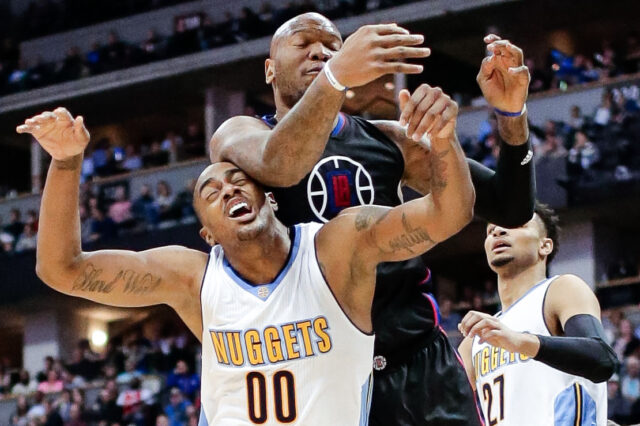There has been a lot of talk throughout the 2014-15 NBA season about the demise of the post game. The perception amongst many casual NBA fans is that post up offense is going the way of the mid-range jumper and becoming a lost art. However, I'd argue that post ups aren't so much "lost" as they are evolving.
There are three main contributors to the evolution of post ups in the modern NBA; the defensive 3-seconds rule, the increased emphasis on 3-point shooting, and the rise of analytics and field goal efficiency. I've written about the impact of all three of these things on Denver Stiffs before but to summarize, rule changes have made it harder to score from the post. That isn't to say that post ups are useless. Post ups are still a valuable way to create efficient shot attempts, however, if the sole purpose of a post up is for the post up player to shoot, then the value of that possession tends to be remarkably low. Like most offensive possessions in the modern NBA, the most efficient possessions are those that have several options and allow players to play fluidly and make quick reads.
In Sacramento, Mike Malone had DeMarcus Cousins, one of the best low post scorers in the NBA. As a result the Kings were the 5th most frequent scorers on post ups according to Synergy data on the NBA’s website. One of the main ways that Malone looked to enter the ball to Cousins in the post was through an action known as “Push Elbow Rip.”
In this set, the first goal is to get the ball to a playmaker, usually Rudy Gay, on the elbow. The Elbow is prime real estate in the NBA and in his press conference on Tuesday, Malone mentioned how his sets often look to initiate from the elbows.

When teams double the post, Gay is able to find the open man near the rim.
After the ball is moved to the elbow, the other four players are put in motion. The forward sets a basic cross screen for Cousins and in most cases, the two guards either screen or clear to the weak side to provide spacing. The action's main option is to get Cousins the ball in the post with nobody on the strong side to provide help. That type of low post position for a scorer with Cousins' skill level is deadly and it is rare for a team to allow Cousins too many opportunities to go one-on-one. Instead, the defense often over commits on Cousins in the post and having a skilled passer at the elbow spot like Rudy Gay allows the set to find the open man. In the video below, several of the plays end with Gay finding the low post screener open near the rim for an easy layup or dunk.
The play has a nice design to get an open post touch, but the action is relatively inefficient and stagnant once Cousins catches the ball in the post. On almost every example in the video there is virtually no weak side movement or secondary option once the ball gets entered to the post. The play simply relies on Cousins’ brilliance to score or create a double team. This worked okay for Sacramento because, as I mentioned, Cousins is one of the best low post players in the NBA. But the Nuggets don’t have a reliable low post scorer and plays like this one are eerily similar to sets Brian Shaw ran for J.J. Hickson, and Kenneth Faried when the offense was ranking toward the bottom of the NBA in efficiency.
My favorite wrinkle in the video above was the last possession, where Ben McLemore sets the cross screen on Cousins before setting a back screen for Rudy Gay. The action forces the defense to help on the cutting Gay which creates a wide open dunk for Reggie Evans. This is a perfect example of how just a little bit of off ball action can create open shots out of the post.
The second example of Malone’s use of post ups in Sacramento was the way that he would post up wing players like Rudy Gay, usually when there are two non-stretch bigs on the court. In the video below there are several different sets that all feature some of the same principles as the Cousins post up video above. The aim of the action is to get the ball to Gay in the post with all four of the other players away from the strong side. Additionally, despite having two bigs playing off of the ball, the Kings rarely went for offensive rebounds in this situation, electing instead to get back on defense. Gay is a very tall small forward and it is easy to envision Malone using Danilo Gallinari in the same way when Gallo is at the small forward slot.
The ideology behind these types of post ups is fairly simple. Although these sets provide a fairly inefficient shot attempt, by using deliberate possessions with minimal weak side action, Malone's teams are able to cut down on turnovers and control the pace of play. The strategy replaces offensive efficiency and offensive rebounding with low turnovers and fewer opponent fast break opportunities.
In the graph below, you can see that there is a correlation between how hard a team pursues offensive rebounds and opponent field goal efficiency on the other end. Malone recognizes this, either intuitively or he has seen the numbers, and sets like these post up samples, demonstrate how his team's sacrifice offensive rebounding for defensive efficiency.
This content is no longer available.
Graph via Seth Partnow and NylonCalculus.com
The strategy is similar to the one that the Cleveland Cavaliers used in the NBA Finals when LeBron dominated the time of possession by holding the ball in the high post and trying to make plays in isolation. Throughout his introductory press conference Malone hammered home the idea that defensive efficiency was supremely important, and sets like these are excellent examples of how that philosophy translates onto the court.
Nonetheless, I still hate stagnant offensive possessions. The aim of the league’s defensive rule changes in 2001 was to discourage teams from running boring, stagnant offense. And today, many successful teams like the San Antonio Spurs, Golden State Warriors and Atlanta Hawks all feature high motion offenses, and avoid stagnant post ups like the ones in the videos above.
Perhaps the strategy in Sacramento was predicated on the fact that the Kings had Cousins, and you always play to your strengths. I just would hope that Malone's post up playbook was left behind in Sacramento.


